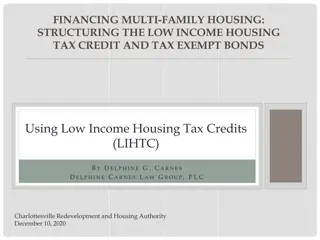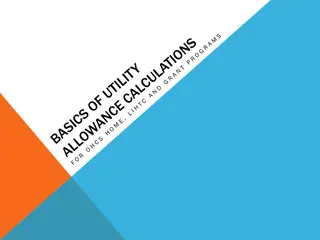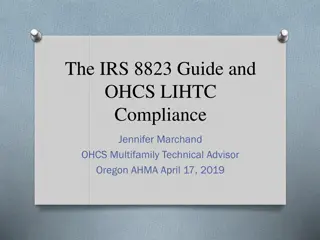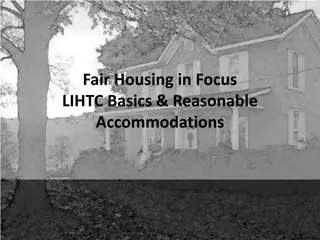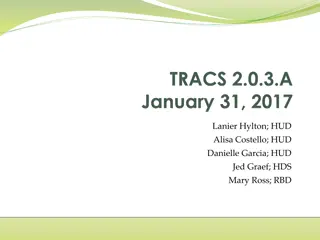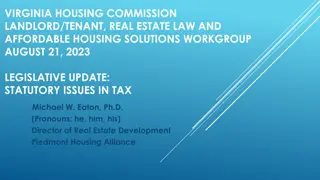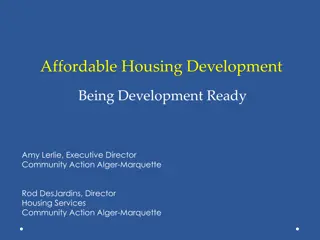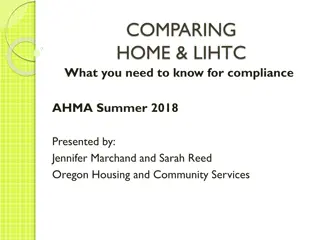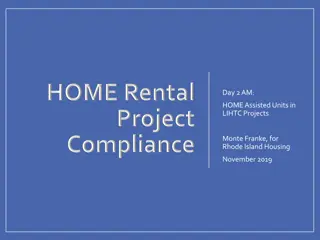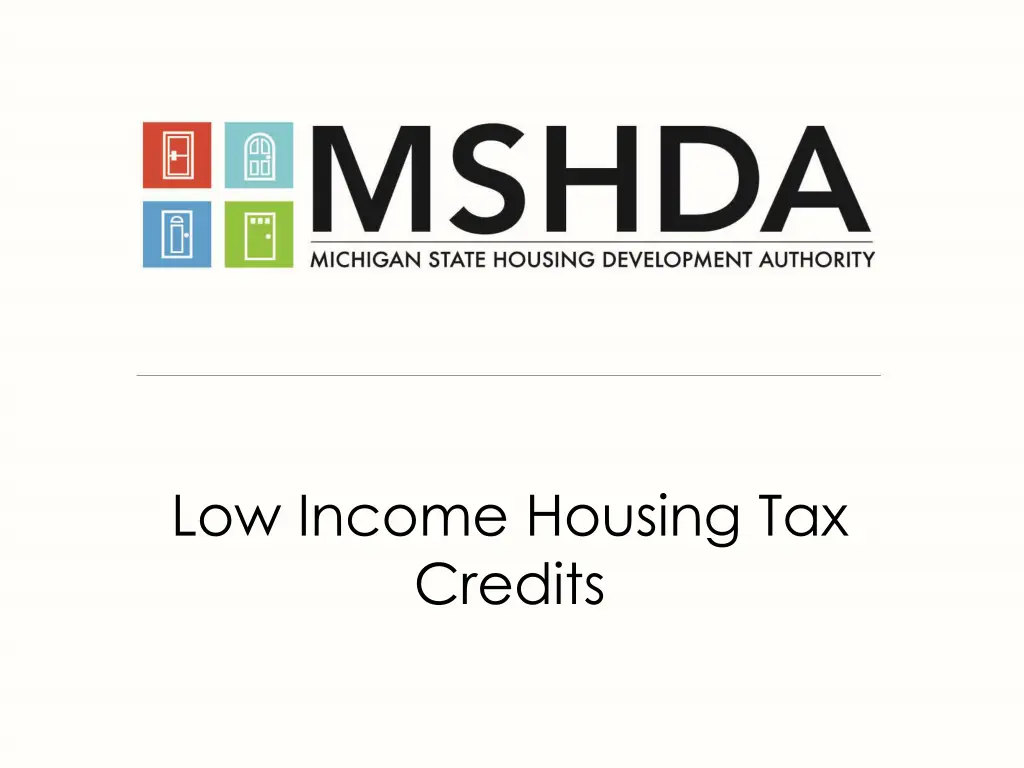
Understanding Low-Income Housing Tax Credits (LIHTC)
Learn about Low-Income Housing Tax Credits (LIHTC), a vital tool for building affordable housing. Discover how LIHTC is allocated at federal and state levels, the types of LIHTC available, and the benefits it provides in bridging funding gaps for housing projects.
Download Presentation

Please find below an Image/Link to download the presentation.
The content on the website is provided AS IS for your information and personal use only. It may not be sold, licensed, or shared on other websites without obtaining consent from the author. If you encounter any issues during the download, it is possible that the publisher has removed the file from their server.
You are allowed to download the files provided on this website for personal or commercial use, subject to the condition that they are used lawfully. All files are the property of their respective owners.
The content on the website is provided AS IS for your information and personal use only. It may not be sold, licensed, or shared on other websites without obtaining consent from the author.
E N D
Presentation Transcript
Low Income Housing Tax Credits
What is a Low Income Housing Tax Credit (LIHTC)? Section 42 of the Internal Revenue Code Allocated to entities that build or rehabilitate rental housing Claimed over 10 years Compliance period of 15 years Must maintain affordable rents for a minimum of 30 years Fills a funding gap between total development costs and loans
Types of LIHTC 9% Tax Credit Competitive (Funding Rounds) Can be used with any financing besides tax-exempt Applications only accepted at specified times Limited supply of credits 4% Tax Credit Non-competitive (may be applied for at any time) Used with MSHDA Tax-Exempt Bond financing No application deadlines No hard limit on supply of credits
How are LIHTC allocated at the Federal level? Allocated to housing credit agencies of states Based upon population, minimum floor MSHDA is the housing credit agency in MI. Approximately $22 million in LIHTC each year
How are LIHTC allocated at the State (MSHDA) level? Qualified Allocation Plan (QAP) Competitive funding rounds The QAP and Scoring Summary can be found on MSHDA website at www.michigan.gov/mshda
How is LIHTC typically used at the project level? Limited Partnerships or Limited Liability Companies LIHTC is allocated to the Owner LP/LLC Investor Member is admitted into the Owner LP/LLC of the project The Investor Member contributes cash equity to pay for development related costs and gets allocated a majority share of the LIHTC to offset their taxable income.
What are the benefits of LIHTC? The project receives equity from the investor to build or rehab a project. Allows a smaller mortgage and lower rents The Investor member uses the LIHTC to offset their taxable income.
Why doesnt everyone develop LIHTC projects? Cost Complexity Knowledge Experience
What are some common mistakes within an application? Missing documentation Incorrect or inconsistent information Missing clarification on complex issues
How can I avoid these mistakes? Ask ahead of time 2nd review by someone else Double, triple, quadruple check
QAP Threshold and Scoring Requirements Site Control PILOT/zoning Environmental Study Market Study Green Building Location Experienced development team Financial information Cost containment
Permanent Supportive Housing MSHDA s QAP awards 25% to PSH developments Developments with at least 25% PSH units Eligible tenants: persons with special needs or homeless under the HEARTH Act; 30% AMI Require collaboration with a service organization
MSHDA LIHTC TEAM 517-373-6007 www.michigan.gov/mshda





